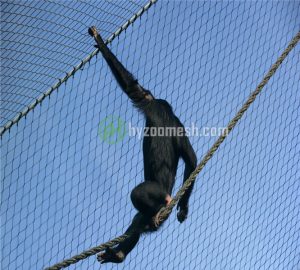Tips for Selecting the Parrot Aviary Mesh
As a parrot enthusiast or breeder, choosing the right parrot aviary mesh is crucial for your bird’s safety, comfort, and well-being. Stainless steel aviary mesh has become the gold standard in the industry due to its durability, safety features, and aesthetic appeal. This comprehensive guide will walk you through everything you need to know about selecting and installing high-quality parrot aviary netting ensuring your feathered friends thrive in a secure and enriching environment.
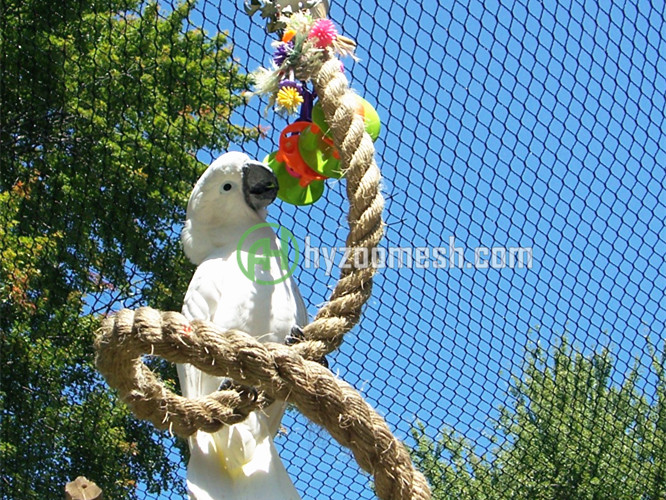
Why Stainless Steel Mesh is the Best Choice
Stainless steel parrot aviary mesh offers unparalleled advantages over traditional materials like plastic, wood, or galvanized wire. Let’s dive into the key benefits:
- Superior Durability and Longevity
- Stainless steel (grades 304 or 316) resists corrosion, rust, and wear, even in outdoor or humid environments. This ensures the mesh lasts for decades, saving you money on replacements.
- Unlike wooden cages that can be easily destroyed by parrots’ strong beaks, stainless steel mesh withstands aggressive chewing and climbing.
- Safety Features for Your Birds
- Smooth wire edges prevent injuries to birds’ delicate feathers and feet.
- Uniform mesh spacing (normally 2cm) prevents limbs from getting trapped while allowing ample airflow and visibility.
- Easy Maintenance and Hygiene
- The non-porous surface of stainless steel makes it easy to clean with soap and water, reducing the risk of bacterial growth.
- No need for harmful coatings or paints—stainless steel’s natural finish is safe for birds.
- Aesthetic and Versatility
- Sleek, modern design complements any home or outdoor setting.
- Customizable sizes and shapes allow you to create tailored aviaries for your parrot’s needs.
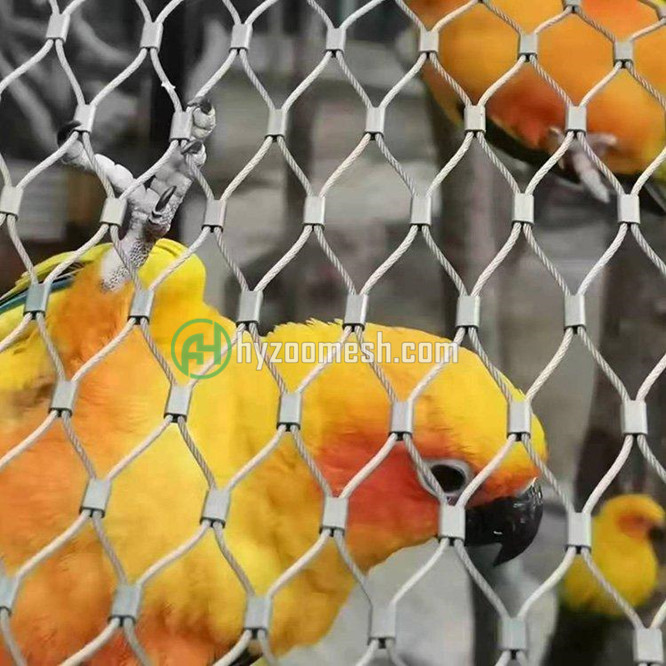
Step-by-Step Guide to Selecting the Perfect Parrot Aviary Mesh
Here’s a checklist to help you make an informed decision:
1. Determine the Parrot Aviary Mesh Material and Quality
- Grade 304 vs. 316 Stainless Steel:
- Grade 304 is suitable for most indoor and outdoor applications.
- Grade 316 offers enhanced resistance to saltwater and extreme weather, ideal for coastal regions.
- Check for Rust-Proof Coatings:
Stainless steel is corrosion-resistant, some manufacturers offer additional coatings for extra durability. Ensure coatings are bird-safe (e.g., powder-coated finishes).
2. Evaluate Mesh Spacing and Strength
- Aperture:
Opt for mesh with 2 cm for small parrots and medium species Tighter spacing prevents escape and injury. - Wire Diameter:
Choose wire diameter between 1.2-2 mm for robustness.
3. Consider Parrot Aviary Netting Size and Design
- Minimum Enclosure Dimensions:
Parrots need ample space to fly and exercise. A rectangular aviary should be at least 45x45x60 cm for small birds and proportionally larger for larger species. - Horizontal vs. Vertical Orientation:
Parrots prefer horizontal flights, so prioritize aviaries with wider dimensions. Avoid round cages, as they lack stable perching spots.
4. Assess Additional Features
- Door Mechanisms:
Look for aviaries with secure, double-locking doors to prevent escapes. - Perching Options:
Ensure the mesh includes diverse perches (e.g., wooden, rope, and textured bars) to promote foot health.
DIY Installation Guide: Setting Up Your Parrot Aviary Mesh
Proper installation is essential to maximize safety and functionality. Follow these steps:
Step 1: Prepare the Site
- Location:
Place the parrot aviary netting in a quiet, well-lit area away from drafts, direct sunlight, and kitchen fumes. - Groundwork:
For outdoor aviaries, pour concrete footings (70 cm deep) to secure posts. Ensure posts are vertical using a level.
Step 2: Assemble the Frame
- Welding or Bolted Connections:
If using a DIY kit, assemble the frame according to instructions. Welded joints provide superior strength, while bolted designs allow disassembly for relocation. - Add Mesh Panels:
Attach mesh sheets to the frame using stainless steel clips or wire ties. Ensure all edges are tightly secured to prevent gaps.
Step 3: Install Supporting Structures
- Roofing:
Cover the parrot aviary mesh with a UV-resistant polycarbonate roof or additional mesh to protect birds from rain and predators. - Anchor Points:
Use galvanized steel cables and ground anchors to stabilize the aviary against strong winds.
Step 4: Finalize the Setup
- Add Perches, Toys, and Feeders:
Position perches at varying heights and angles. Install food and water dishes away from perching areas to prevent contamination. - Test for Safety:
Check for sharp edges, loose wires, or potential escape routes.
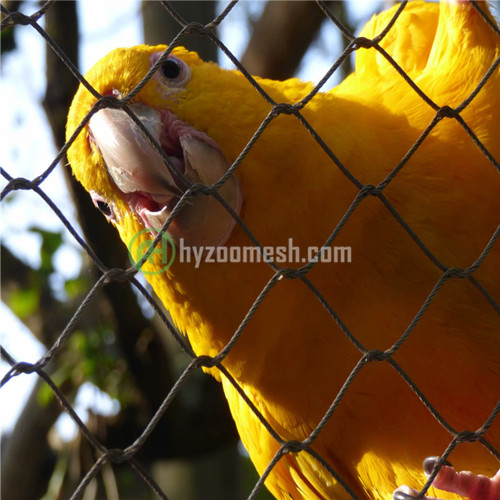
Common FAQs About Parrot Aviary Mesh
Q1: Can I use secondhand parrot aviary mesh?
A: Avoid used mesh unless it’s thoroughly inspected for rust, cracks, or coatings that may contain lead or zinc.
Q2: How often should I clean the parrot aviary netting?
A: Wipe down the mesh weekly and deep-clean monthly with bird-safe disinfectants.
Q3: What if my parrot chews the mesh?
A: Redirect their behavior with chew toys and supervise playtime. Stainless steel mesh is designed to withstand chewing.
Conclusion: Prioritize Safety and Comfort
Investing in high-quality stainless steel aviary mesh is a long-term commitment to your parrot’s health and happiness. By choosing the right materials, ensuring proper installation, and maintaining a safe environment, you’ll create a sanctuary where your feathered friends can thrive for years to come.
Any interests about this stainless steel aviary net? Click here for more details.
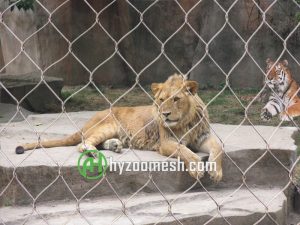
304/316 Stainless Steel Lion Enclosure Mesh: Ultimate Safety for Wildlife Parks
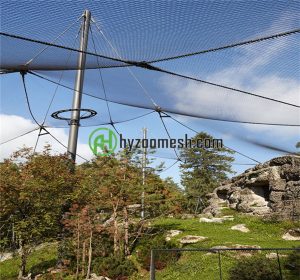
Upgrade Your Zoo Fence with Stainless Steel Zoo Enclosure Mesh

How to build a Solid & Durable Tiger Fence?
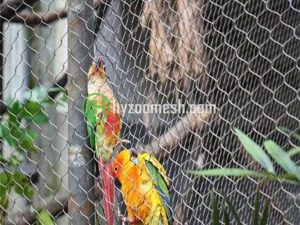
Choosing The Right Aviary Mesh is Crucial for Your Parrots
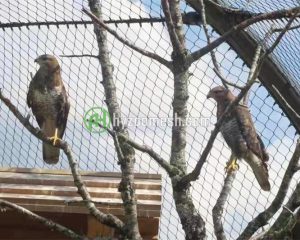
Bird Aviary Mesh: The Ultimate Guide to Safe and Durable Enclosures
